Art & Exhibitions
A Photography Show That Redefines Masculinity in the Age of #MeToo Is a Hit in London—See Images From It Here
Images by Catherine Opie and Ana Mendieta are among the standout works on show.
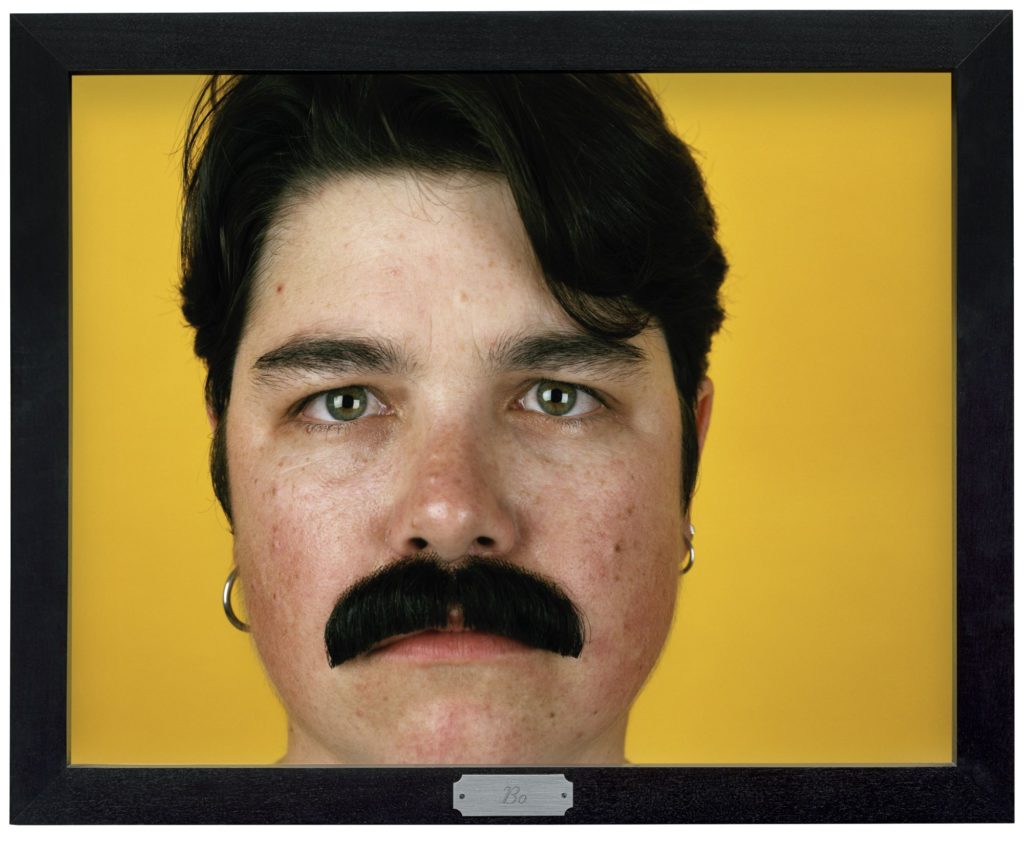
Images by Catherine Opie and Ana Mendieta are among the standout works on show.

Javier Pes

“The male body is under the spotlight,” says Alona Pardo, a curator at the Barbican Art Gallery in London who has organized a hit show on masculinity in its many guises and meanings.
The exhibition has struck a nerve in the wake of the #MeToo movement. The spectacular downfall of toxic alpha-male film producer Harvey Weinstein, who today received a 23-year sentence for sex crimes, provides a backdrop for the show, which features works by 50 artists.
The exhibition is light on Hollywood heart throbs and other idealized images of the male body, although there is plenty to get your posts flagged on Instagram—if photography was permitted in the gallery.
Visitors are immediately confronted by four large-scale images of a male body past its prime. The late artist John Coplan’s large-scale nude self-portraits, which he created while in his 70s, sets the tone for the group show that challenges conventional stereotypes. Pardo describes it as an alternative take on the classical Greek frieze.
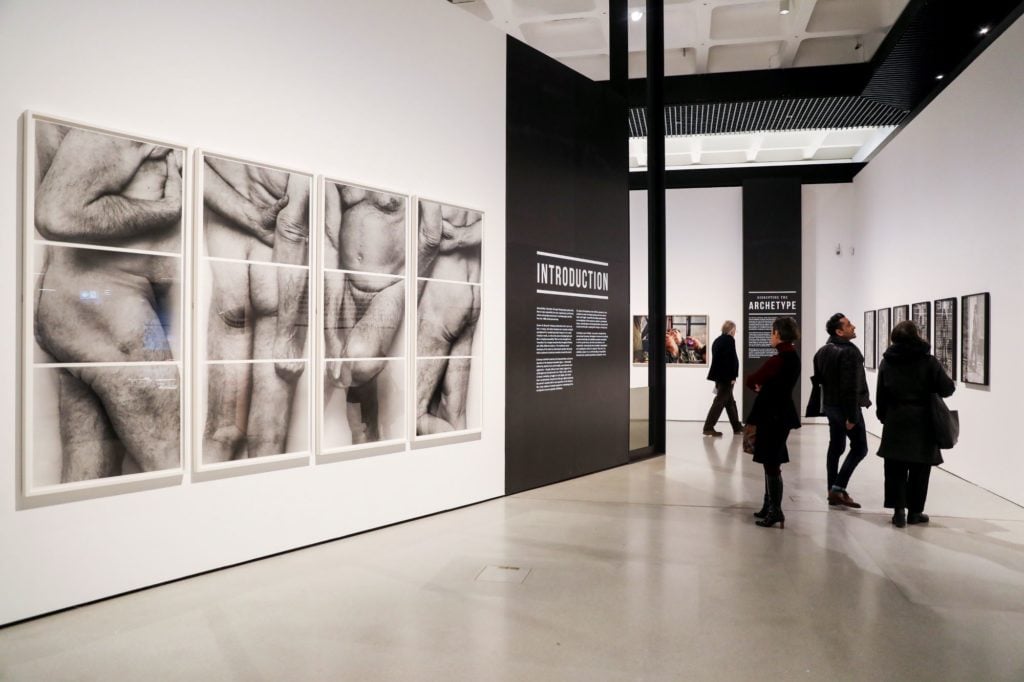
“Masculinities: Liberation through Photography,” Barbican Art Gallery, installation view, ©Tristan Fewings, Getty Images.
While homoerotic images by male artists such as Peter Hujar and David Wojnarowiz are among the most tender in the show, images created by female artists that subvert male authority and accessories provide some of the most arresting moments. “It felt natural for women to be included,” Pardo says: “We are looking at a broad spectrum of the gender continuum.” There is a section devoted to women portraying, and subverting, masculinity.
“Facial hair plays an important role in ‘Masculinities,’” Pardo says. The show includes Catherine Opie’s series “Being and Having” (1991). The artist photographed her close friends in the West Coast’s LGBTQ+ community sporting false moustaches, tattoos, and other stereotypical masculine accessories.
In 1972, Ana Mendieta created “Untitled (Facial Hair Transplants),” another striking series in a show that undermines traditional male gender stereotypes. Mendieta documented shaving the beard of a fellow male student and putting it on her own face. Many other feminist artists in the 1970s satirized macho behavior, among them Marianne Wex, whose series “Let’s Take Back Our Space” features women “man spreading,” and men sitting demurely.
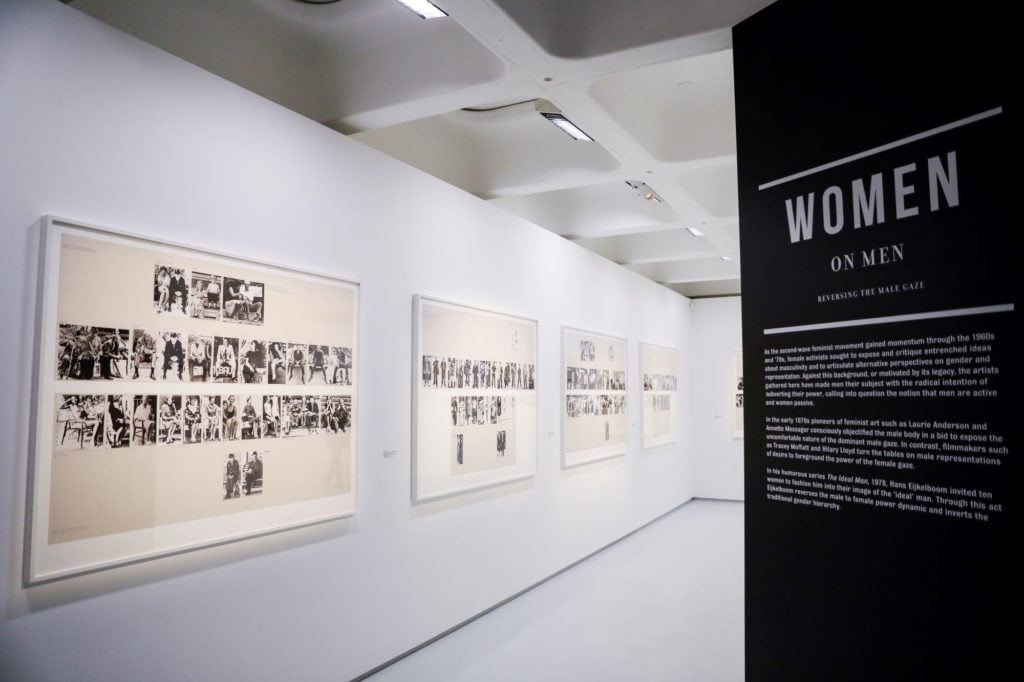
Marianne Wex’s feminist images on show in “Masculinities: Liberation through Photography,” Barbican Art Gallery, installation view, ©Tristan Fewings, Getty Images.
If Weinstein’s downfall personifies toxic masculinity brought to book by women who spoke out, the alpha male US President Donald Trump is also “lurking in the background,” Pardo says. She included Clare Strand’s Men Only Tower (2017), a sculpture that skewers Trump’s boast that his New York tower has 68 floors. (There are only 58.) Strand has stacked 68 vintage copies of the magazine Men Only in a tall vitrine. Within their pages the artist has secreted 20 images of resistance against the patriarchy.
“It is wonderful to see there is an appetite for the show,” Pardo says. Daily attendance is much higher than the gallery expected, and it is holding up despite concerns about coming into central London due to coronavirus.
Pardo says that all of the artists and their estates that she approached were positive about being included in “Masculinities.” The curator thought a few might be reluctant to take part but “everyone thought it was timely,” she says.
Below are highlights of the exhibition, which is due to travel to the Luma Foundation during Les Rencontres d’ Arles this summer, and the Gropius Bau, Berlin, in January 2021.
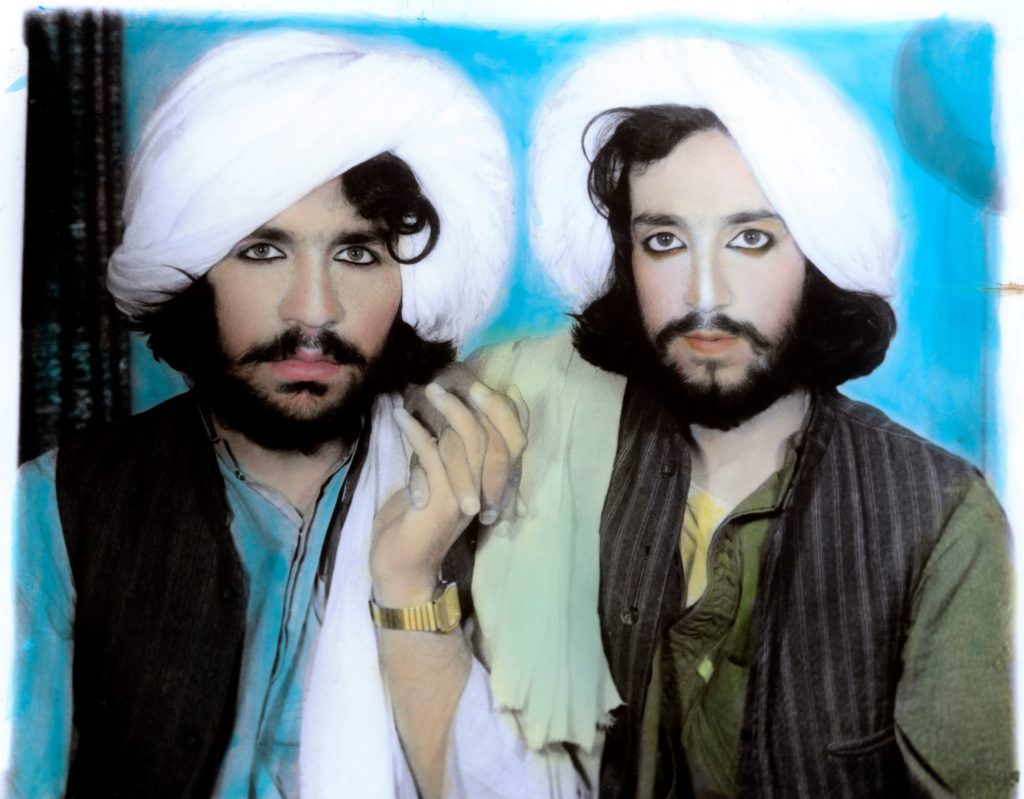
Thomas Dworzak, Taliban portrait. Kandahar, Afghanistan (2002). © Collection T. Dworzak/Magnum Photos.
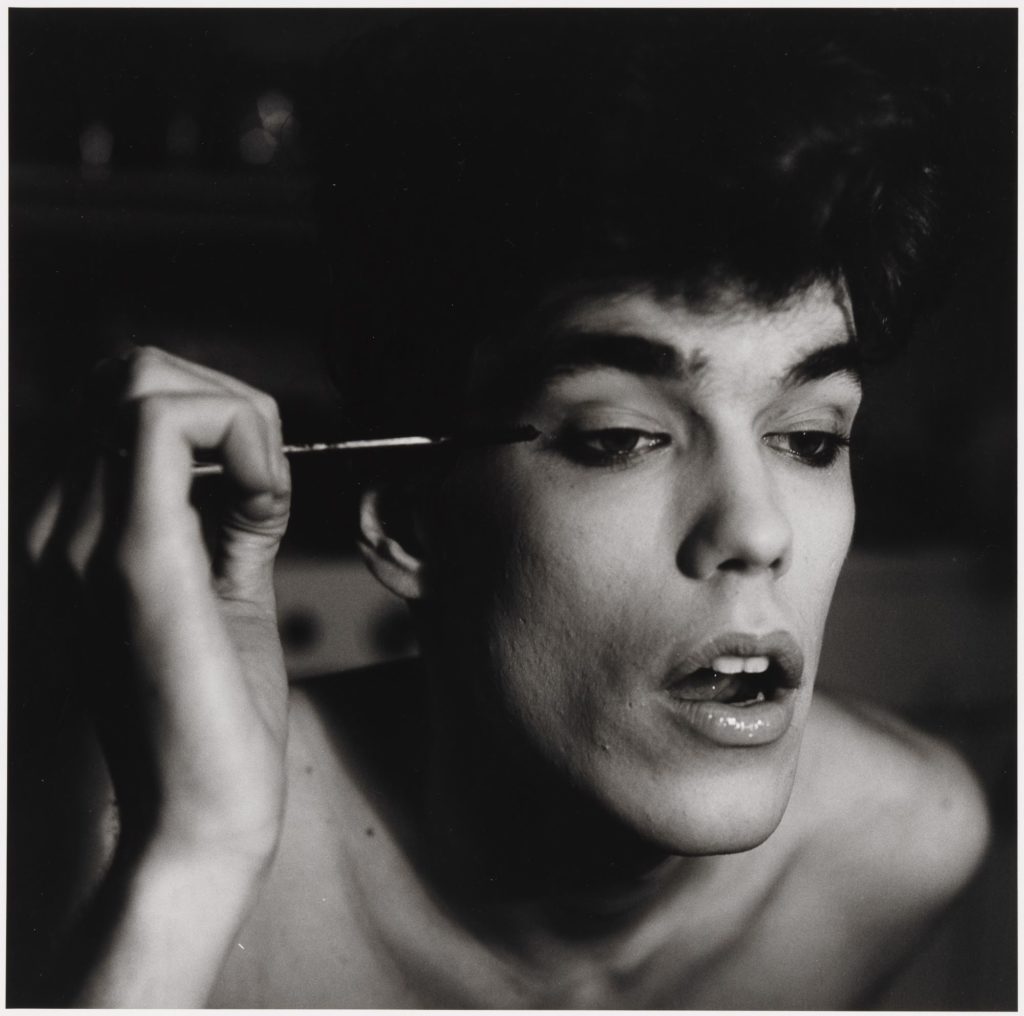
Peter Hujar, David Brintzenhofe Applying Makeup (II), (1982) © 1987 The Peter Hujar Archive LLC; Courtesy of Pace/MacGill Gallery, New York and Fraenkel Gallery, San Francisco.
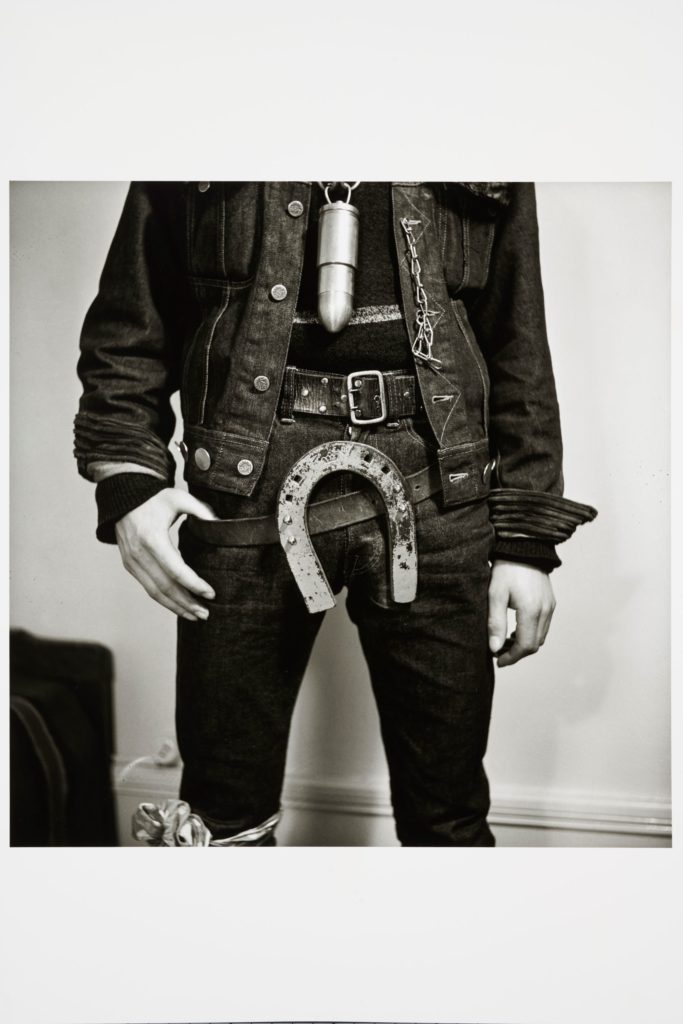
Karlheinz Weinberger, Horseshoe Buckle (1962). © Karlheinz Weinberger. Courtesy of Esther Woerdehoff.
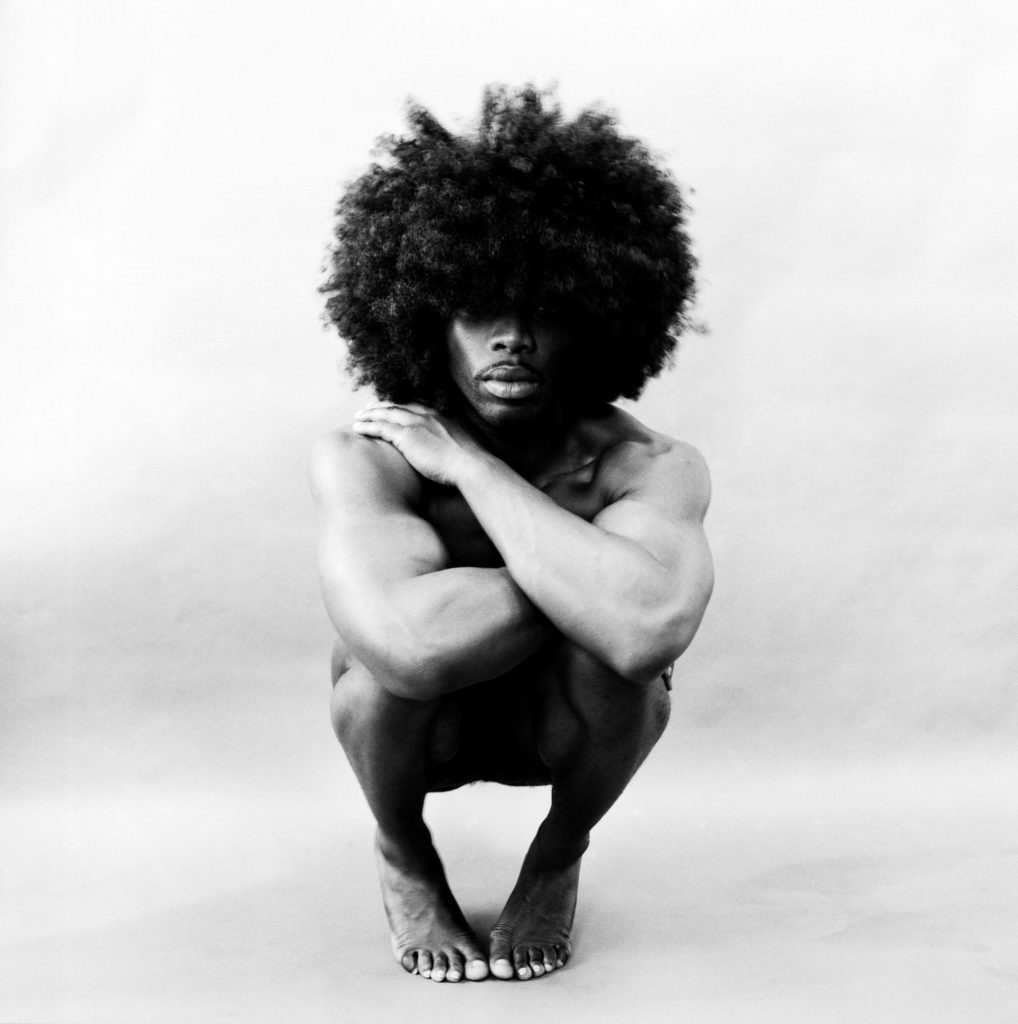
Rotimi Fani-Kayode, Untitled (1985). © Rotimi FaniKayode, Courtesy of Autograph, London.
“Masculinities: Liberation Through Photography,” Barbican Art Gallery, February 20 through May 17.